3 Feelings That Can Cause Teen Girls Weight Gain Plus Unique Solutions And Food Tips For Each
3 FEELINGS THAT CAN CAUSE TEEN GIRLS TO GAIN WEIGHT PLUS UNIQUE SOLUTIONS AND FOOD TIPS FOR EACH (ISSUE 51)
By Diane Gold
We are all so similar in so many ways that it is highly phenomenal that each of us has such a unique perspective, belief system and way of being. We all feel less than balanced about something. Funny how we can be so strong in 1 area and so miserably shaky in another.
We can all understand each other’s feelings if we bother to stop being so exclusively absorbed in our own lives. Today, we will look at the similar feelings that teen girls have that make them gain weight. We think we are the only ones who feel what we feel. This couldn’t be farther from the truth.
1)
I feel big, I don’t like it and no one else worries about this issue the way that I do. Or even if someone else is concerned, that doesn’t make me feel better.
 ACTION STEP BEFORE RUNNING TO EAT
ACTION STEP BEFORE RUNNING TO EAT
1) Go into the privacy of your own room or in a bathroom, if you don’t have your own room. If no private bathroom, you will have to work on putting up a temporary curtain for privacy (a clothesline and a sheet will make a good one).
2) Sit on your bed or some kind of chair.
3) Touch your R shoulder with your L hand and your L shoulder with your R hand, so that your arms will be criss-crossed.
4) Close your eyes.
5) Let the palms slide all the way down with light pressure, all the way to the wrists.
6) Realize the strength in your arms and your hands, and think of all the talents they have. Stick with me here. I have a point.
7) Imagine you are the most popular girl in school touching her arms. She has many talents for her arms, too.
8) Imagine you are the girl whose family lives in the street, and she is touching her arms. Again, she has performed many tasks with those arms.
9) Now, realize that we all use our arms and hands in similar ways and that this small exercise makes us similar, not different.
This exercise is not a big revelation, but, in doing the exercise, we see, immediately, at least, 1 similarity, unlike when we see ourselves as big vs. someone who is small.
So, next time we feel big vs. small, let us stop for a moment and do this exercise to feel our power, to feel how similar we are to others and to be calm in a quiet, meditative place.
FOOD TIP
Now, have a healthy snack such as an apple or sauteed carrots with a big glass of water.
2)
No one can love me because I am big.
 The first 8 words of the previous sentence are probably the most common 8 words in our mind. The 9th word, in this case, pertains to weight. But anything can be put in its place. We all, at one time or other, feel that we can’t find love because of some way we are.
The first 8 words of the previous sentence are probably the most common 8 words in our mind. The 9th word, in this case, pertains to weight. But anything can be put in its place. We all, at one time or other, feel that we can’t find love because of some way we are.
We’re too short, our skin is wrong, our voice sounds squeaky, we have a mole on our face, we limp, we wear a prosthetic.
Mostly, we just feel don’t like the way we feel.
The only thing to do here is to understand that this is a universal feeling and that it’s our job to get ourselves to the next place.
ACTION STEP FOR SCHOOL BEFORE EATING
1) Survey the students at school. (If you are home schooled, do this survey with the other home schoolers.) Tell everyone you are doing a research project for the school paper or community news. Make sure you team up with the school paper or community news, so that the editor will publish the results when you get them and help put the results into an article.
2) Tell people you will not publish their names.
3) Have people finish the statement,
“No one can love me because I am _____________________.”
Collect the answers, and you will see that everyone can complete the sentence in some way.
Variation 1) Another way to collect the information is to put their answer in a fishbowl anonymously. More people would be likely to answer if they knew there was no way their secrets could become exposed, but that’s not always possible in every school or community.
Variation 2) You can put this question on a website and have people comment anonymously. If you are interested in this variation, please contact us, and we will arrange to make you a page on WarriorsOfWeight.com for this purpose.
FOOD TIP
Now, have a healthy snack such as fresh, organic romaine lettuce leaves, just washed. It’s amazing how filling they are if eaten slowly. Also, drink a glass of water.
3)
I don’t want to smile because I’m ugly, at my weight or at any weight.
 Of course, we know that smiling is better than frowning. It actually makes us happier, studies have shown. And smiles bring people to us; frowns, unfortunately, push people away. So what do you say to a great exercise for smiling?
Of course, we know that smiling is better than frowning. It actually makes us happier, studies have shown. And smiles bring people to us; frowns, unfortunately, push people away. So what do you say to a great exercise for smiling?
ACTION STEP BEFORE EATING
1) Take time out in a quiet, private place, as in action step 1).
2) Frown or keep the face devoid of a smile.
3) Make sure you are in a safe place, sitting on a chair; and close your eyes. Work as if you will not have your sight for the first 9 steps of the exercise. Develop the sensitivity of a sightless person.
4) Place the palms on the face, and examine the frown position, as if it is the first time you have ever felt your face. (It might be the first.)
5) Take as much time as needed without opening the eyes.
6) When ready, turn the frown to a smile with eyes closed.
7) Notice the differences in the structure of the face.
8) Notice how we take our sight for granted, and be happy about having yours. I’m grateful for mine.
 9) Doesn’t the smile make you laugh when you feel the face breaking into a smile? It does make me laugh. It is quite fascinating how the entire face changes under the skin from such a thing as a smile.
9) Doesn’t the smile make you laugh when you feel the face breaking into a smile? It does make me laugh. It is quite fascinating how the entire face changes under the skin from such a thing as a smile.
10) Relax and smile with eyes open.
We are much more beautiful when we smile. I, personally, look a good 10 years older when I don’t smile. And, when I do, I’m all teeth. But the happiness is in the smile.
Smiling feels good if we hold our face, too, as we just experienced. Have fun working your smile. It can get you through some tough times.
FOOD TIP
Now, for fun, go get a snack food, preferably something solid, like an apple. Smile while eating it and feel your face at the same time. This will slow down the eating process, always a good thing. It’s also more challenging to keep the food in your mouth if you eat with a smile, tempering the eating process.
CONCLUSION
Imagine you love a very large person. You aren’t loving the person because s/he is large or small. You may love her bigness or smallness. You aren’t loving her because she has brown eyes, although you may appreciate the brown eyes. You are not loving her because she has brown hair. These physical traits have nothing to do with why you love her. These traits may make her easy to look at, but trait appeal is not love, not at all.
In the same way, when someone loves you, and someone definitely does, it is not because of your size, your eyes, your hair; it is because you are who you are.
It’s easy for us to see that when we lose someone, we all feel the same pain, the same feeling. Likewise, we figure that feeling sick or breaking an arm feels the same whether we are large or small. But when we feel bad about ourselves, it’s hard to realize that we all have similar feelings, more or less, at 1 time or other, in our lives.
It sometimes helps to find inventive ways of extending the universal understanding that we all have similar feelings and are not alone.
Small action steps to these feelings make HUGE differences. Especially if they are repeated. Give the action steps a go, and enjoy the journey.
We are with you, have been where you are and are here when you reach out.
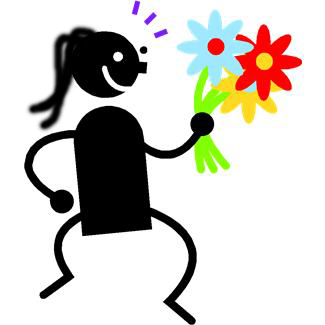
WarriorsofWeight Consulting
Click the image below for a helping hand.
If you need a hand, please don’t hesitate to reach out. Help is right here.
FEEDBACK
Please leave a comment and LIKE.
DIANE GOLD, AUTHOR
Diane Gold, Founder of Warriors of Weight, Moms For Healthy Daughters, is a mentor in tai chi, kung fu and meditation, a music, fitness and stress expert and a dedicated mom.
She moves along observing behavior, continually seeing the similar ways we act, feel and are. She says,
“It is truly helpful when we know we are like each other. Of course, there is the other side of some of us that enjoys being unique. But when feeling bad, we want to know that people understand us, that we are not freaks, that others are going through the same thing and that we can get through it.
“When there is a hurricane, we stand together united. We make each other feel better, we share electricity, ice, food and bandages. We are thrown together in union when there is a weather disaster. We must take the time to unite in what matters to each to us throughout our lives: our peace of mind and peace of homeland.
“Ï believe that anyone reading this is living in the generation that will learn this compassion through the need to learn it.
“Let us learn to enjoy our sameness, learn to love our uniqueness and, through understanding, learn the principles of peace and helping each other along the way.”
For help, check out 1-Step Consulting.


 By Diane Gold
By Diane Gold
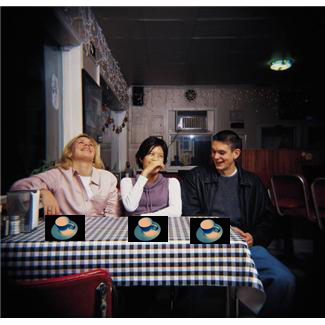 • Caffeine in tea speeds the metabolism. Theanine, another antioxidant present, has a relaxing effect on the body, which counteracts the caffeine. Therefore, the stimulant effect of caffeine is mild or not noticeable to most, yet, it increases metabolism, which is great for weight loss.
• Caffeine in tea speeds the metabolism. Theanine, another antioxidant present, has a relaxing effect on the body, which counteracts the caffeine. Therefore, the stimulant effect of caffeine is mild or not noticeable to most, yet, it increases metabolism, which is great for weight loss.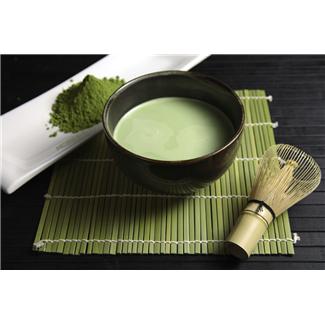 CONCLUSION
CONCLUSION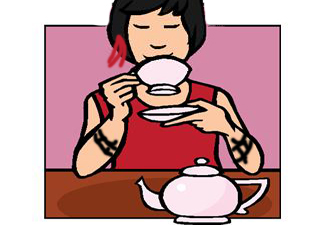 ACTION STEPS FOR TEENS
ACTION STEPS FOR TEENS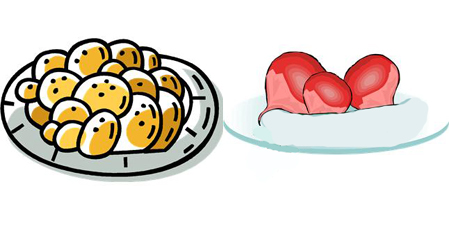 Using previous research, Mark created two groups of undergrad students from Case Western. After skipping a meal, they were asked to sit down. 2 bowls were placed in front of each participant: one with cookies, one with radishes. Students were each given an assignment: to eat only 1 particular food.
Using previous research, Mark created two groups of undergrad students from Case Western. After skipping a meal, they were asked to sit down. 2 bowls were placed in front of each participant: one with cookies, one with radishes. Students were each given an assignment: to eat only 1 particular food.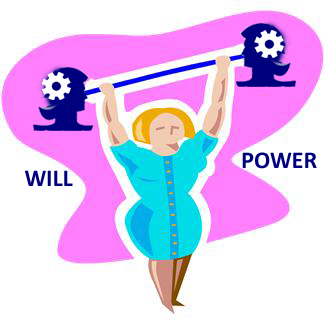 “Will power isn’t just a skill. It’s a muscle, like the muscles in your arms or legs, and it gets tired as it works harder, so there’s less power left over for other things.”
“Will power isn’t just a skill. It’s a muscle, like the muscles in your arms or legs, and it gets tired as it works harder, so there’s less power left over for other things.”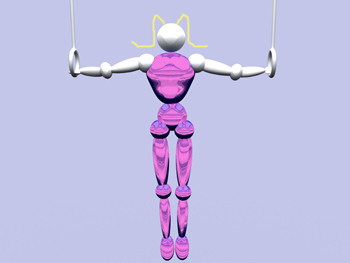 Whether we are as disciplined as my loveable, meticulous
Whether we are as disciplined as my loveable, meticulous  accountant, Charlie, or are as free as the spirit of the Flower Child Generation, we always come across choices that involve our ability to manipulate our decision making process. I use the word “manipulate” because, often, we have to mold our decisions through debating what we want the outcome to be.
accountant, Charlie, or are as free as the spirit of the Flower Child Generation, we always come across choices that involve our ability to manipulate our decision making process. I use the word “manipulate” because, often, we have to mold our decisions through debating what we want the outcome to be.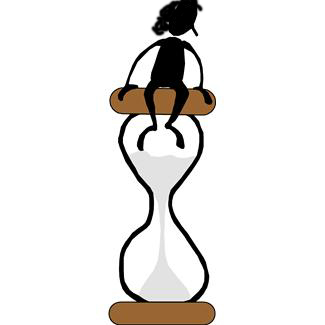 For most of us, we begin to learn what will power is when our parents say no to our demands, and we have to slowly temper ourselves or stop crying from frustration or, in some cases, learn to tow the line to avoid physical punishment from our parents. Those parents who use a lot of corporal action on their young usually have issues with will power themselves.
For most of us, we begin to learn what will power is when our parents say no to our demands, and we have to slowly temper ourselves or stop crying from frustration or, in some cases, learn to tow the line to avoid physical punishment from our parents. Those parents who use a lot of corporal action on their young usually have issues with will power themselves.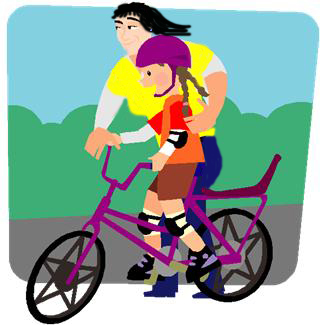 If we have family support, this process may or may not be easier. Yes, we will learn to ride our bike with less frustration, but we may use less will because we have more nurturing and soothing from family. Everyone is different, so we never know which combination of factors areis going to produce what reactions in us. We are all complex.
If we have family support, this process may or may not be easier. Yes, we will learn to ride our bike with less frustration, but we may use less will because we have more nurturing and soothing from family. Everyone is different, so we never know which combination of factors areis going to produce what reactions in us. We are all complex.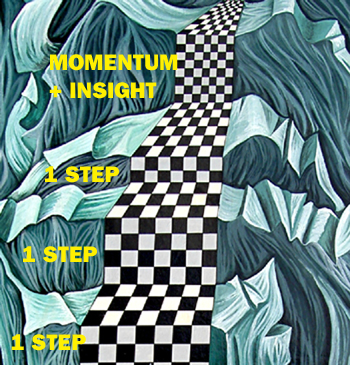 Ever think about how taking 1 step, such as developing a friendship, succeeding at doing an experiment, getting an award, creates the next step in the same direction as the first step? Each step taken creates a layer of proficiency and understanding that grows every time a new step is taken. And the momentum from the first step continues, if we put in a tiny bit of effort. This is 1-Step Education.
Ever think about how taking 1 step, such as developing a friendship, succeeding at doing an experiment, getting an award, creates the next step in the same direction as the first step? Each step taken creates a layer of proficiency and understanding that grows every time a new step is taken. And the momentum from the first step continues, if we put in a tiny bit of effort. This is 1-Step Education. tranquility, motivation, determination, excitation and filled with grateful laughter as I felt my presentation strengthen itself. I also noticed how my confidence level remained throughout the entire session and past it. I was high-fiving myself repeatedly and had more sales than usual because of the initial reactions from the early-in-the-session success.
tranquility, motivation, determination, excitation and filled with grateful laughter as I felt my presentation strengthen itself. I also noticed how my confidence level remained throughout the entire session and past it. I was high-fiving myself repeatedly and had more sales than usual because of the initial reactions from the early-in-the-session success.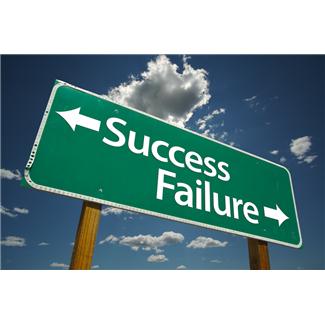 WHAT IF WE HAD EARLY CHILDHOOD LESSONS IN SUCCESS & FAILURE? WHICH WAY WOULD WE CHOOSE?
WHAT IF WE HAD EARLY CHILDHOOD LESSONS IN SUCCESS & FAILURE? WHICH WAY WOULD WE CHOOSE? Lessons in how we react to success and failure, including what to do with our strong emotions, should start early on, when we are starting to develop. They should be a requirement: regularly scheduled lessons in making good choices. After all, one lesson in how we handle success and failure could change the direction of someone’s entire life, and it could be incorporated into the values or civil duties classes that already exist.
Lessons in how we react to success and failure, including what to do with our strong emotions, should start early on, when we are starting to develop. They should be a requirement: regularly scheduled lessons in making good choices. After all, one lesson in how we handle success and failure could change the direction of someone’s entire life, and it could be incorporated into the values or civil duties classes that already exist. CONCLUSION
CONCLUSION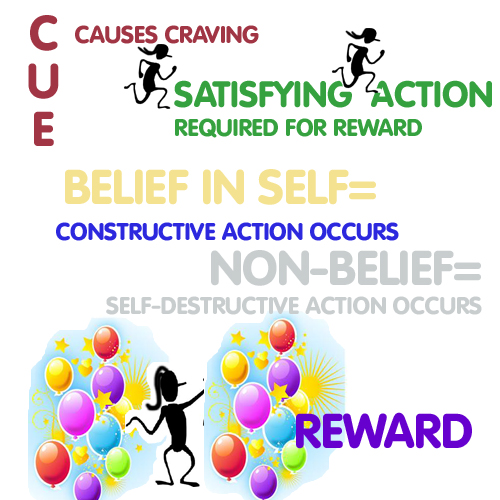
 There are so many cues that result in habitual action. Anything can set off someone who gambles to excess to create gambling by saying,
There are so many cues that result in habitual action. Anything can set off someone who gambles to excess to create gambling by saying,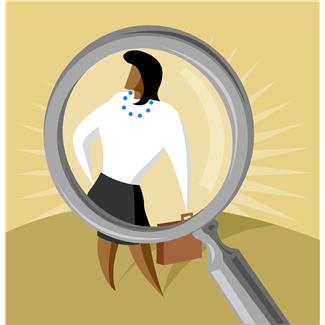 ACTION STEP
ACTION STEP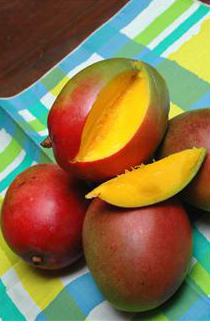 After getting poison ivy many times in New York, I thought I was free of it when I moved to Florida. Ha! Little did I know that the precious mango tree that hung over the fence was loaded with the very same toxin. Cashew and pistachio, too, but I haven’t come into contact with those.
After getting poison ivy many times in New York, I thought I was free of it when I moved to Florida. Ha! Little did I know that the precious mango tree that hung over the fence was loaded with the very same toxin. Cashew and pistachio, too, but I haven’t come into contact with those.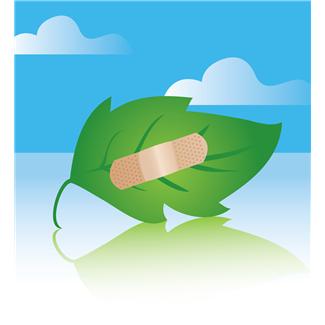 For years, I have been covering the dermatitis rash with bandages. This was for 2 reasons: 1) to keep the rash from spreading when the blisters broke and 2) to keep me from scratching it.
For years, I have been covering the dermatitis rash with bandages. This was for 2 reasons: 1) to keep the rash from spreading when the blisters broke and 2) to keep me from scratching it. The belief part of the equation comes from inside. We need to believe in ourselves to get the job done because we must be strong enough to remember our self-examination. Statistics say this is done in a group, even if it is a group of 2.
The belief part of the equation comes from inside. We need to believe in ourselves to get the job done because we must be strong enough to remember our self-examination. Statistics say this is done in a group, even if it is a group of 2. ACTION STEP
ACTION STEP So you ‘re in school, you’ve had a pretty calm day, nobody teased you yet and you’re getting kind of hungry. You know you can step out and go to the bathroom and pass the snack machine, unless you’re in one of those states that has reduced snack machines in favor of salad bars. (I’m not knocking this; I’m for it since studies are showing that curbing the sugar foods in vending machines is helping a lot of girls with weight. It’s also teaching a better way of snacking.)
So you ‘re in school, you’ve had a pretty calm day, nobody teased you yet and you’re getting kind of hungry. You know you can step out and go to the bathroom and pass the snack machine, unless you’re in one of those states that has reduced snack machines in favor of salad bars. (I’m not knocking this; I’m for it since studies are showing that curbing the sugar foods in vending machines is helping a lot of girls with weight. It’s also teaching a better way of snacking.) ACTION STEP
ACTION STEP ACTION STEP
ACTION STEP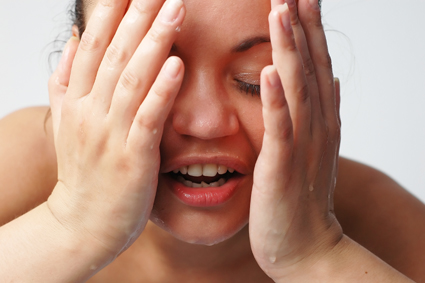 ACTION STEP
ACTION STEP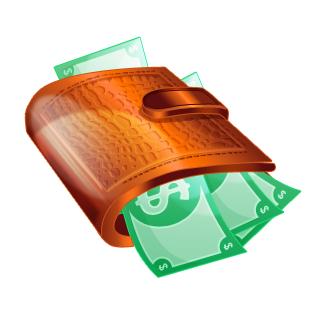 ACTION STEP
ACTION STEP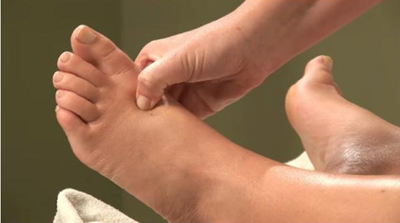
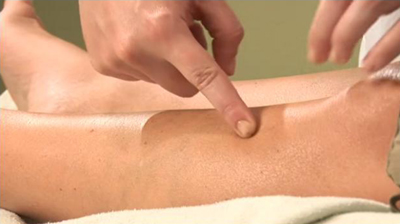 Now, Stomach-36 is a common point for regulating digestion. It has an auto regulating effect on the digestion, meaning that it can be used for things like diarrhea and constipation.
Now, Stomach-36 is a common point for regulating digestion. It has an auto regulating effect on the digestion, meaning that it can be used for things like diarrhea and constipation.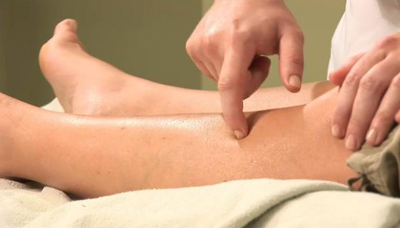 Another technique, known as tapping, is also effective here. You just want to tap on the point for about 30 seconds, at a time. Now, like all points, this point is found bilaterally on the body. So, you can find it on both legs. [Do it on both legs.]
Another technique, known as tapping, is also effective here. You just want to tap on the point for about 30 seconds, at a time. Now, like all points, this point is found bilaterally on the body. So, you can find it on both legs. [Do it on both legs.]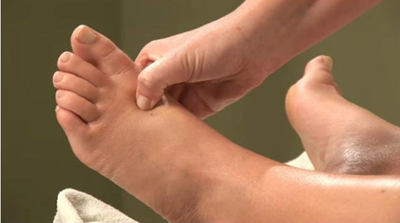 So, to locate Liver-3, it is in the hollow, between the first and second metatarsal bones. And again, your finger will kind of fall into a dip here, just before the bones begin to close. Now, Kidney-1 is on the bottom of the foot, almost directly below Liver-3.
So, to locate Liver-3, it is in the hollow, between the first and second metatarsal bones. And again, your finger will kind of fall into a dip here, just before the bones begin to close. Now, Kidney-1 is on the bottom of the foot, almost directly below Liver-3.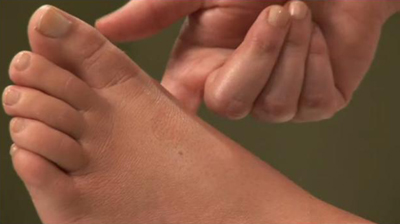 And the tapping technique is very useful for calming a mind that just won’t quit so that you can have better awareness and make good choices for yourself, as far as diet and exercise. I recommend doing this daily.
And the tapping technique is very useful for calming a mind that just won’t quit so that you can have better awareness and make good choices for yourself, as far as diet and exercise. I recommend doing this daily.





